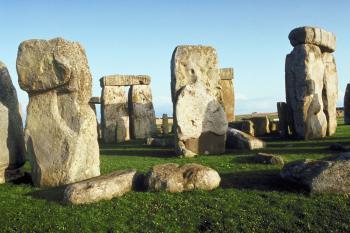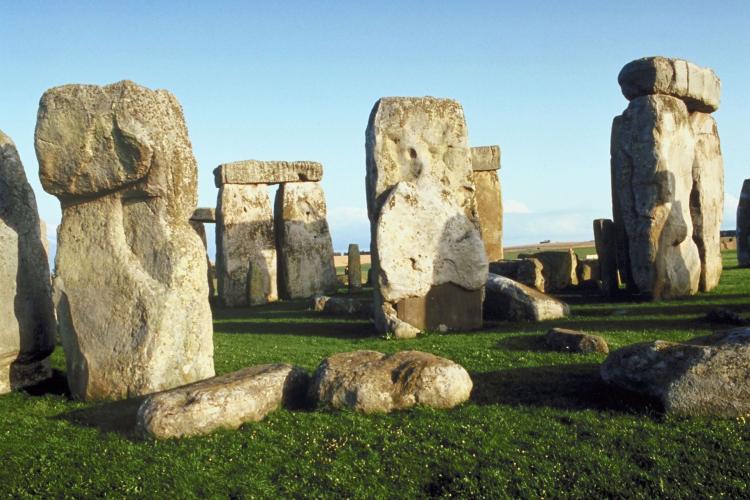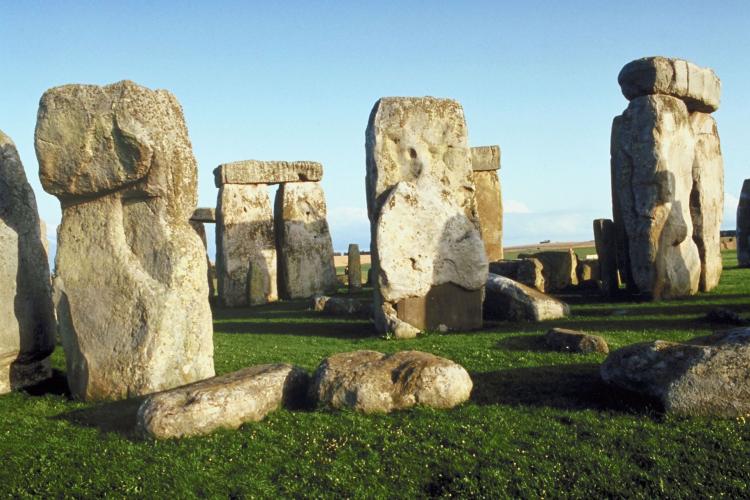In 2007, archeologists uncovered a small village in Great Britain that dated back to the Neolithic era (7000 to 4000 B.C.E). It was found near the ancient World Heritage site known as Stonehenge.
Two miles northeast of the ancient post and lintel monolith, Mike Parker Pearson and the Stonehenge Riverside Project discovered a site known as Durrington Walls. Constructed primarily of wood, this village was carbon dated to have been built between 2600 and 2500 B.C.E. Despite its age, the dwellings were found to still be in remarkable condition.
Since Stonehenge has been dated to approximately the same era, experts are considering whether the unearthed village was the place of residence for its constructors.
Beginning in 2003, the investigation—financed by National Geographic—excavated homes, beds and other wooden furniture items, a stone pathway, as well as footprints embedded in clay. In addition to the relics of daily life, archeologists uncovered a structure consisting of timber posts placed in concentric circles. Researchers believe this to be a wooden replica of nearby Stonehenge.
Another curious discovery at the site has been the large amount of broken pottery and animal remains strewn throughout the village. Researchers point out that the village’s inhabitants weren’t merely untidy; instead they claim that these artifacts are the product of a religious ceremony. Some also believe that site was not a permanent dwelling, but a temporary residence for a semi-annual gathering.
Stonehenge is one of the most enigmatic architectural structures on the planet and perhaps the most popular tourist destination in Great Britain. The mystery of this multi-megalith is partly due to the lack of rational explanation for how such primitive technology could have moved the gigantic blocks of rock. Some of the stones of this ancient monument weigh between 25 and 45 tons—carried from a quarry many miles away—and they are placed in such a way that even defies modern technology.
There is still not a single, conclusive theory about the motives behind the construction of Stonehenge. Even though the majority of investigators accept that it was a place of worship and used for honoring the dead, it has also been proposed that the site was meant for other religious rituals or astronomical observation. It is known that the constructors of the monument had knowledge of astronomy, since it is to be found to have the rising sun shine directly through the structure’s axis on the equinoxes and solstices.
While it looks quite primitive at first glance, researchers continue to discover just how sophisticated Stonehenge is. In his book “Stonehenge Decoded,” astronomy professor Gerald Hawkins describes how the monument can actually predict eclipses. Likewise, in “Stonehenge: Sun, Moon, Wandering Stars” M. W. Postins reveals how Stonehenge (in relation to various point in the surrounding area, such as the nearby Aubrey Holes) correlates to the entire solar system.
While the Stonehenge Riverside Project offers the latest possibility of the builders of the monument, it is by no means the first. Many researchers believe that the megalithic structure actually had different groups add to it over thousands of years. 12th century historian Giraldus Cambrensis even suggested that the Arthurian Legend’s Merlin himself was behind the construction of the monolithic structure!
Whoever was responsible for Stonehenge, how did they move and strategically place such enormous stones? Furthermore, what methods did they use to obtain such detailed astronomical knowledge thousands of years before the invention of the telescope?







Friends Read Free